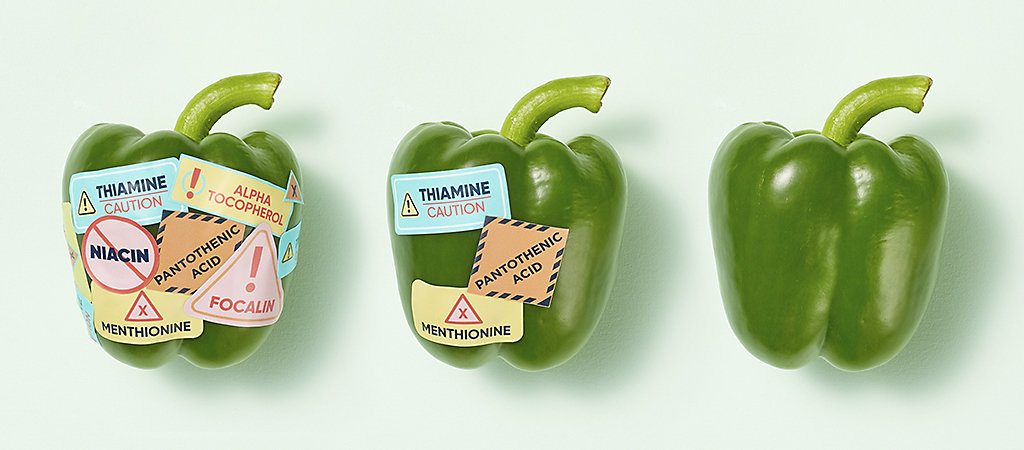Five Questions You Should Be Asking When Buying Foods Labeled Natural

It’s hard deciphering between synthetic chemicals and natural food ingredients. So, what does all-natural really mean?
Have a look at this partial ingredient list:
None of the above ingredients sound too natural, do they? Actually, these are some of the vitamins and amino acids found in a red bell pepper.
It can be confusing to decipher the differences between synthetic chemicals and natural food ingredients when shopping for quality, healthy foods. We see food items labeled natural, all natural, nature’s way, etc, but what do these labels actually mean?
In fact, the US Food & Drug Administration (FDA) doesn’t regulate the use of the term natural on food labels. They simply consider natural to mean nothing artificial or synthetic has been added to a food that normally would not have the additive in it, but there is no formal definition1.
To ensure you are making an informed decision when grocery shopping, here are five questions to keep in mind when choosing products with the natural label.
Are you looking at the product’s brand name or slogan?
Some companies choose to include the word natural or nature in the product’s brand name or slogan. This is can create some very memorable names, however, it’s important to remember that just because a company uses the word natural in their brand name, does not mean it directly relates to the ingredients or processing of the food that the brand produces.
Do you see the claim of natural ingredients?
When a product makes the claim of made with natural ingredients, be sure to read the entire ingredient list. The product might still contain artificial ingredients since this claim does not mean 100 percent of the ingredients are natural.
Does the product claim no artificial colors or flavors?
This claim does not mean that the product does not contain any added colors or flavors. Flavors or colors derived from plants or animals can still be present in the food item even with this claim.
Is the food item a meat or poultry product?
Meat and poultry products are slightly more regulated when it comes to the use of the label natural. According to the United States Department of Agriculture (USDA), a meat or poultry product can be labeled natural if it contains no artificial ingredient or added color, and is only minimally processed, meaning the processing did not fundamentally alter the meat product2. Any meat or poultry product labeled natural has to explain the meaning of natural for that specific product, e.g., no artificial ingredients, which can help with your food choice.
What is the nutritional value of the product?
This might be the most important question. Often, the words “natural” or “no artificial” bring thoughts of “healthier”, but this is not necessarily true.
Just because a product is made with natural ingredients does not mean there aren’t high amounts of added fat, sugar, and/or sodium (even if the additives aren’t artificial!). It’s important to always read the nutrition facts for foods to make sure they contain the nutrition that you want and expect (here is a great article on how to read nutrition fact labels3).
In the end, all food from grocery stores is safe to eat no matter what labels are attached to it. Remember to look at all of the labels on every food product including the ingredient list and nutrition facts to help you make an informed decision for quality, healthy foods.
1 U.S. Food & Drug Administration. 2016. “Natural” on Food Labeling.
2 United States Department of Agriculture. 2015. Meat and Poultry Labeling Terms.
3 U.S. Food & Drug Administration. 2017. How to Understand and Use the Nutrition Facts Label.